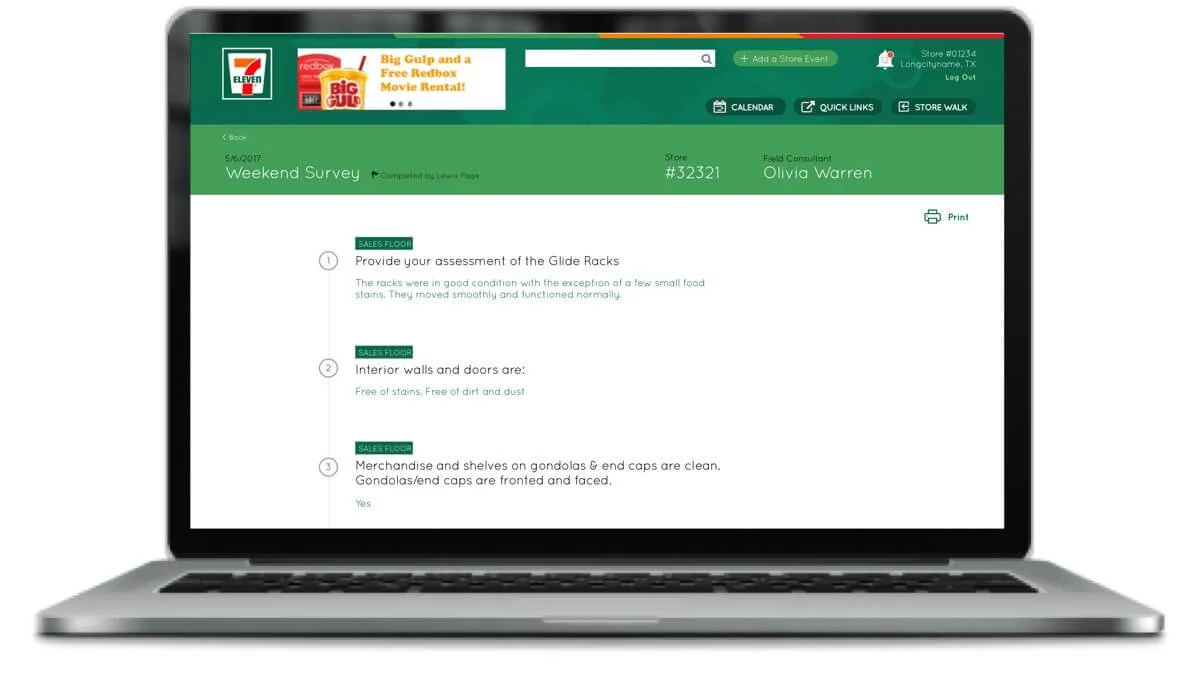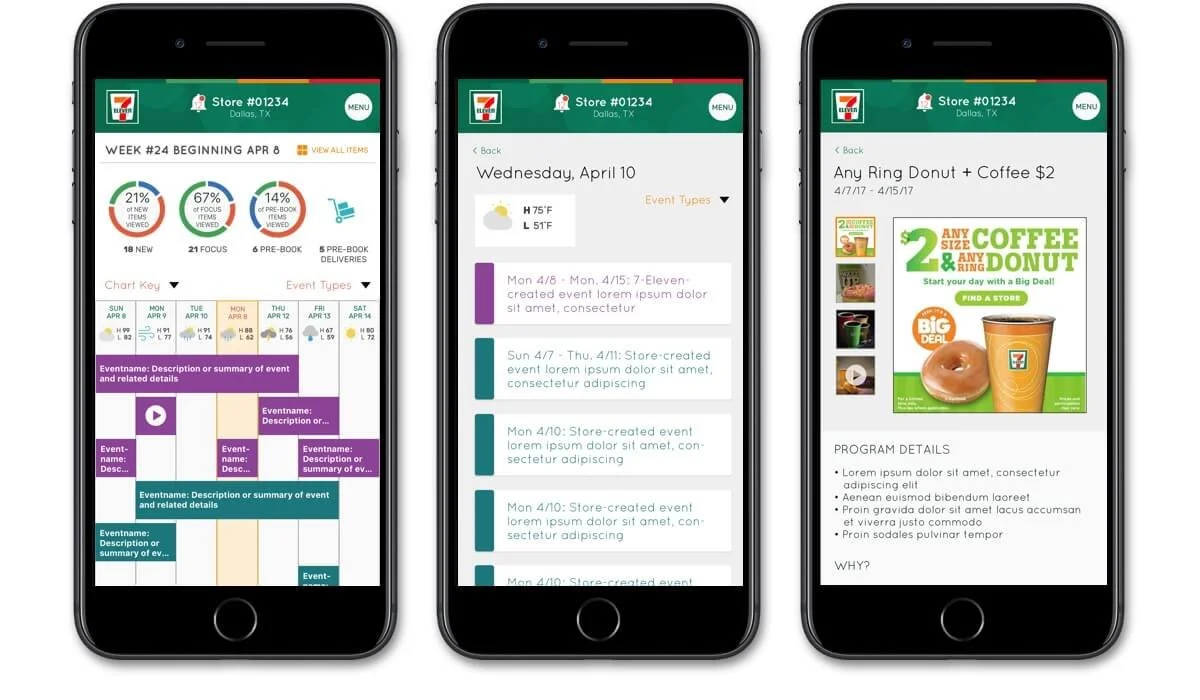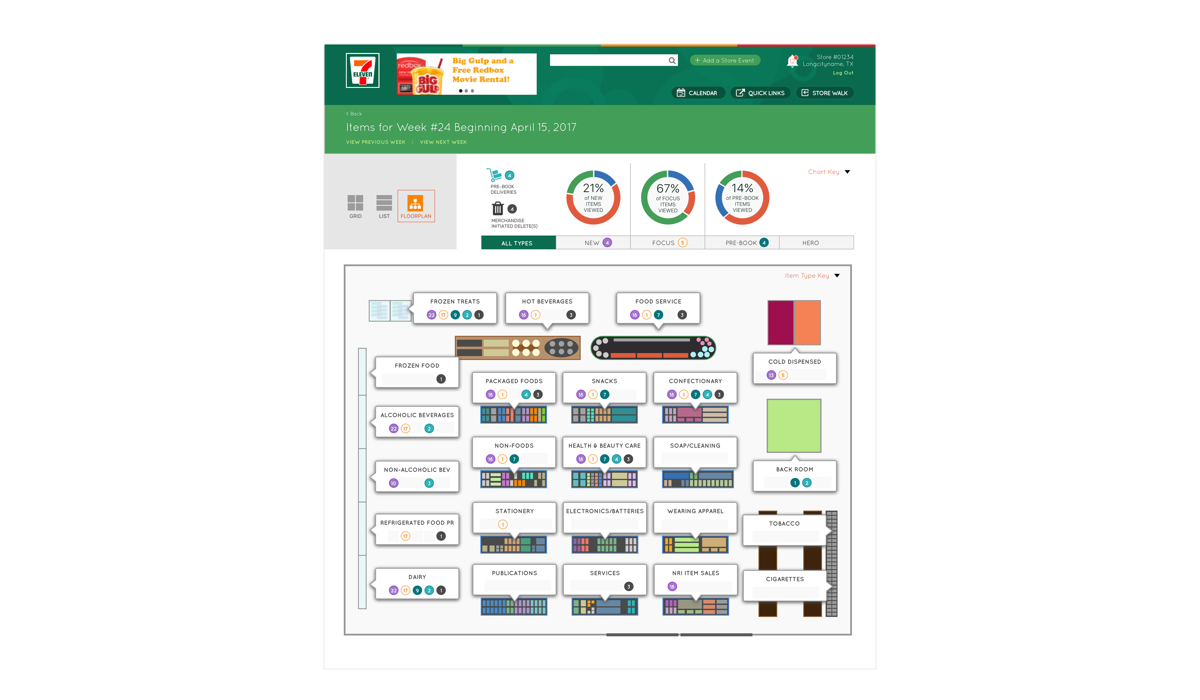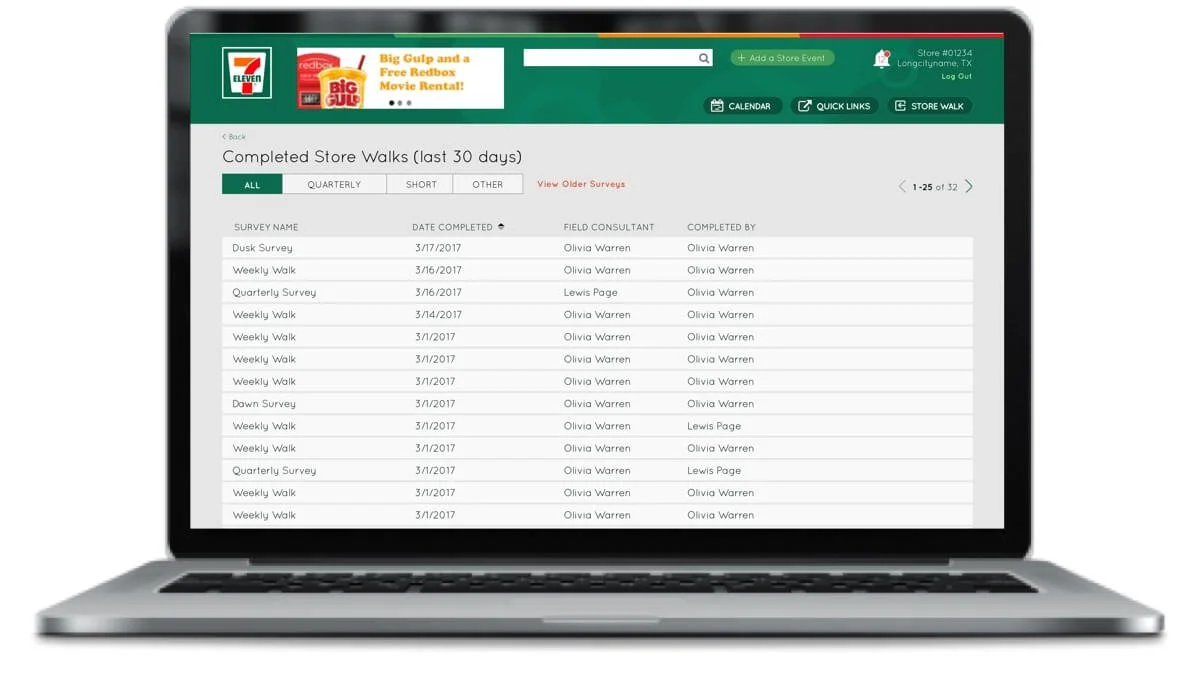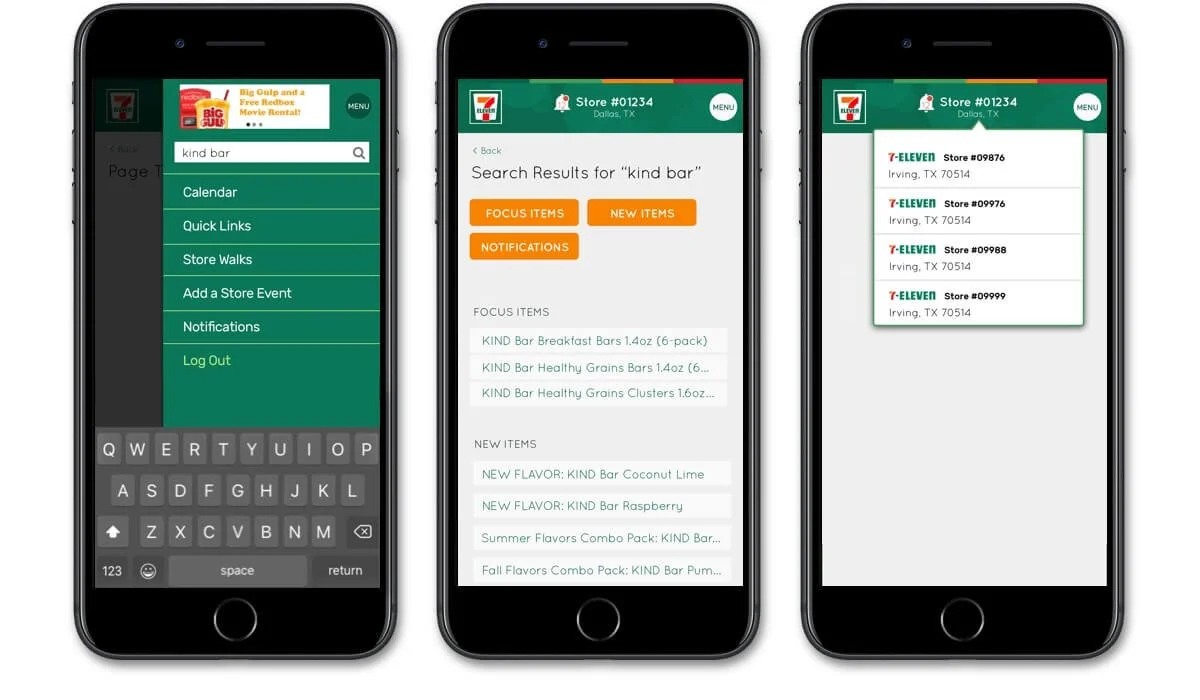Goals
Centralize store-level and regional metrics
Enable planning and ordering based on real-world context (events, weather, deadlines)
Provide search and insight into new and promotional items
Create a responsive UI for both desktop and mobile use
Offer floorplan-based inventory visualizations
Allow users to toggle between individual stores and regions
Process
As the UX Lead, I owned the end-to-end planning and execution of the user experience and visual design, managing stakeholder relationships and communication across a distributed cross-functional team. My approach was to strategize collaboration between my Salesforce partner implementation team and developers at 7-Eleven. We worked together onsite in 7-Eleven’s Dallas office and remotely.
This involved:
Developing a UX and UI roadmap calendar to promote transparency and align efforts across design and development sprints
Facilitating discovery sessions, including “day-in-the-life” interviews and ride-alongs
Creating user stories and flows based on cross-functional needs
Designing and validating interactive wireframes with 7-Eleven stakeholders to drive alignment and feedback early and often
Delivering responsive UI designs based on 7-Eleven’s design system
Leading collaborative reviews with stakeholders and our combined implementation team
Prepping all design assets for handoff, working closely with developers to ensure accuracy
Result
All deliverables received sign-off and moved to User Acceptance Testing, and were prepped for a phased rollout across store and regional operations.
Highlights
Interactive wireframes: Aligned collaborators from start to finish and aided in early sign-off to keep the implementation team on schedule
Weekly Calendar View: Contextualized inventory planning with local events, weather, and sales timelines
Store Event Creation: Let users log relevant events that impact foot traffic and sales
Regional Toggle: Allowed field consultants to switch between stores for oversight
Floorplan View: Visualized inventory layout to help with in-store planning
Pre-book & Focus Item Tools: Enabled smart ordering and flagging of new product launches
Desktop view of store walk survey.
Mobile views of the dashboard and calendar view, a detailed view of April 10 weather and store events, and details for a store promo.
Desktop view of the dashboard and store layout summary depicting counts for different inventory types (New, Focus, Pre-book, Hero).
Desktop view of store walk history.
Mobile views of the menu and search/filter function, and store selection feature.
Reflection
This project taught me the importance of aligning roadmaps early in fast-paced environments. I initially underestimated the volume of incoming changes, which taught me to pivot and incorporate greater visibility and flexibility into my design planning. The UX calendar I created proved to be a valued resource for stakeholders and distributed teams in communicating design effort and sprint overlap. It has been a part of my toolkit ever since.
